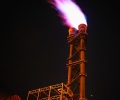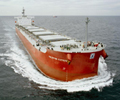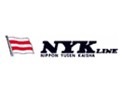Analysis: Australia’s LNG regas projects face scrutiny amid domestic gas policy changes

Australia’s LNG regasification projects are facing scrutiny after a drilling moratorium in the state of Victoria was lifted earlier this year, and with more acreage recently opened up for exploration by the federal government to boost domestic energy security.
The easing of upstream restrictions has made the race for LNG receiving terminals more competitive in South Australia and the eastern states of Victoria, Queensland and New South Wales, and not all the projects will make it to the finish line.
But experts said there is still a strong case for some of the projects because of looming gas shortages, slow upstream progress and the terminals serving as an alternative to pipelines from gas-producing regions in the west.
There has been limited progress in resolving medium and long-term east coast gas supply challenges, and by 2030 supply constraints will become increasingly evident with declining production offshore Victoria and no major gas discoveries, energy consultancy EnergyQuest said in an Oct. 16 report.
“Any developments onshore Victoria or NSW will provide some supply increments but are unlikely to materially shift the long-term demand-supply imbalance,” it said. “We expect one and possibly two of the Gladstone LNG trains to be closed as increased gas volumes are diverted from the LNG projects to the domestic market. The gap between demand and supply will also increasingly rely on LNG imports at international prices,” the consultancy added.
The Gladstone terminals in Queensland are the 9 million mt/year Origin-ConocoPhillips’ Australia Pacific LNG, 7.8 million mt/year Santos-led Gladstone LNG and Shell’s 8.5 million mt/year Queensland Curtis LNG. Actual output is below combined capacity of 25.3 million mt/year due to insufficient gas.
“As we get into the 2030s, the east coast LNG contracts will begin to tail off. At the same time, as the closure of coal-fired power generation accelerates, the demand for natural gas to back-up renewables is likely to grow,” EnergyQuest said.

REGASIFICATION PROJECTS
Earlier this year, S&P Global Platts Analytics noted that individual issues had delayed final investment decision for each regas project.
It said AGL’s Crib Point LNG terminal faced environmental issues, EPIK’s Newcastle project required an extensive and costly pipeline, and Australian Industrial Energy’s Port Kembla FSRU struggled to find buyers as gas imports were only feasible during peak demand periods. On Oct. 20, AIE’s Japanese shareholders sold their stakes to Squadron Energy. Victoria also has a second project, by Vitol-backed Viva Energy, near its Geelong refinery.
“Australian Industrial Energy’s Port Kembla Gas Terminal is the only new project that can deliver substantial quantities of natural gas to market as early as 2022 and address the east coast’s predicted short-term gas supply challenges,” a spokesman for AIE told S&P Global Platts in early October.
“The 14-16 month construction window is relatively short and the project will then have the capacity to supply more than 75% of NSW’s gas needs,” he said, adding that gas imports and domestic production can co-exist.
A spokesman for EPIK said in early October that its Newcastle LNG project was targeting FID for 2021 and operations by early 2023.
“Thanks to its Southern Hemisphere location, Australia has the opportunity to take advantage of reverse seasonal LNG pricing, meaning that Australian high-demand periods coincide with low global demand, which translates into lower-priced LNG for Australian east coast customers,” he said.
Meanwhile, EnergyQuest says Australia’s east coast gas production is heading towards a “cliff” in the mid-2020s and LNG imports were the “only” means of securing supply in time.
It said Victoria’s gas fields were on the brink of decline — beginning around 2023 — and the Cooper Basin, which supplies New South Wales and South Australia, will start to decline around 2026.

SEABORNE VS PIPELINE
Some of the opposition to regas terminals comes from the assumption that they will import LNG from other countries, despite Australia’s abundant gas exports.
But developers say the terminals will enable LNG diversions from Australia’s export terminals, making up for the lack of pipelines from resource-rich but remote Western Australia.
“Port Hedland in Western Australia is a long way from Melbourne so, as in Malaysia and Indonesia, the cheapest form of transport is by LNG tanker rather than by a long-distance pipeline,” EnergyQuest said.
“It may even be cheaper to move gas from Gladstone to Melbourne by LNG tanker than by pipeline,” it added. It estimated shipping LNG from Gladstone to Crib Point to cost 54 cents/GJ compared with $2.45/GJ by pipeline from Wallumbilla in Queensland to Melbourne.
However, Credit Suisse analyst Saul Kavonic remained skeptical.
“The economic case for LNG import terminals in NSW was already tenuous, which the long delays to their target timeframes illustrate, and Narrabri’s development could make it that little bit harder still for a NSW import terminal business case to stack up,” he said earlier this month.
Source: Platts

 Hellenic Shipping News Worldwide Hellenic Shipping News Worldwide, Online Daily Newspaper on Hellenic and International Shipping
Hellenic Shipping News Worldwide Hellenic Shipping News Worldwide, Online Daily Newspaper on Hellenic and International Shipping






















 PG-Software
PG-Software